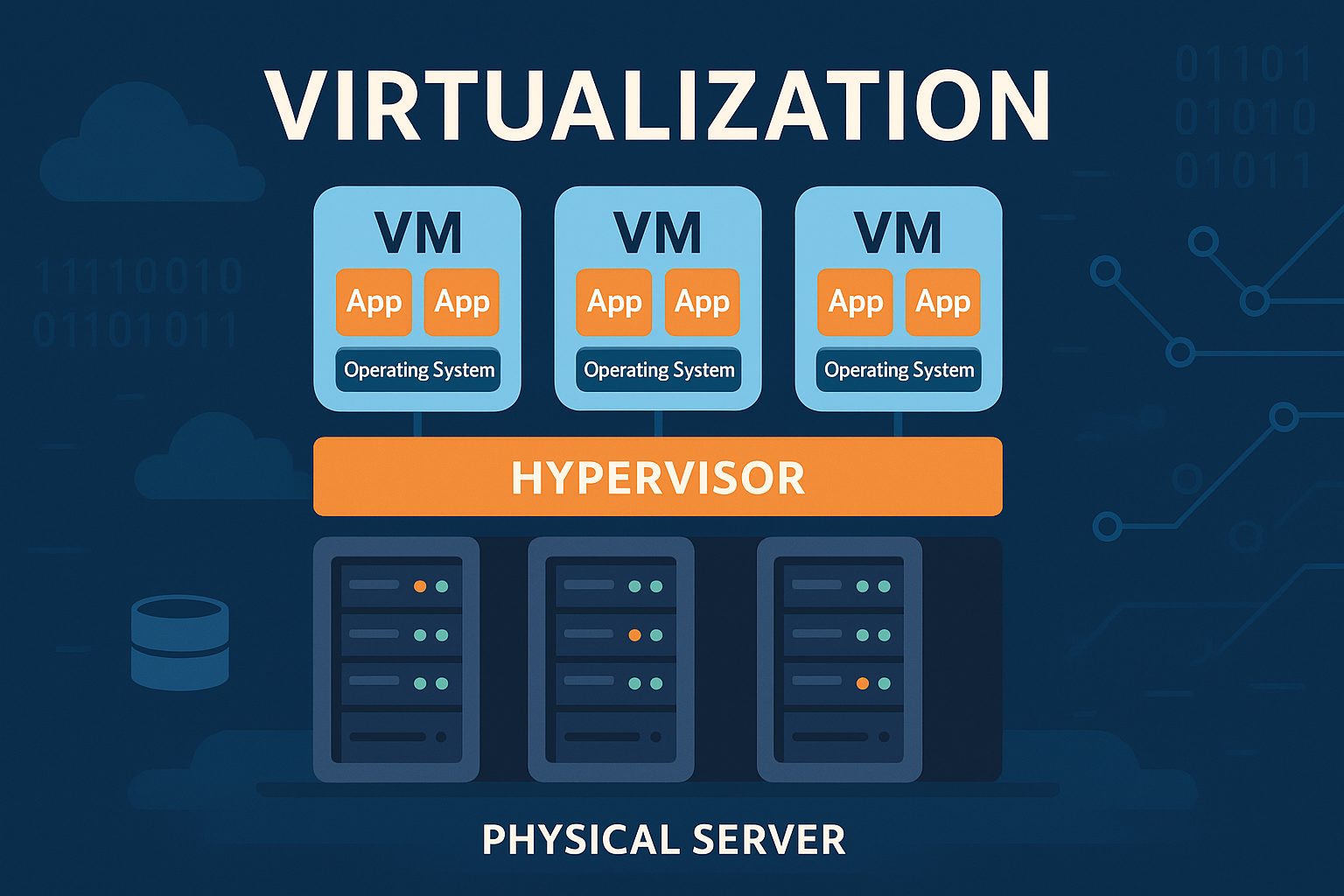
Unlocking Efficiency and Flexibility: The Benefits of Virtual Machine Virtualization
In today’s digital landscape, virtualization—especially virtual machine (VM) virtualization—has become foundational to modern IT infrastructures. By abstracting hardware into multiple isolated virtual systems, virtualization brings transformative benefits that touch cost, performance, agility, security, and sustainability.
💰 1. Cost Savings & Hardware Consolidation
Traditionally, organizations have run dedicated physical servers for individual applications, leading to low utilization rates. VMs dramatically shift that model: a single server can host multiple operating environments, each running its own OS and apps, fully leveraging CPU, memory, and storage resources
liquidweb.com+15ibm.com+15circleci.com+15
.
This consolidation slashes capital expenditures on physical hardware, reduces maintenance overhead, and cuts energy and space costs—all helping businesses achieve a higher return on infrastructure investments .
🏃 2. Improved Efficiency & Resource Optimization
Through hypervisor-led management, VMs receive only the resources they need—with the flexibility to scale up or down dynamically
circleci.com+1digitalocean.com+1
. This ensures efficient utilization: no more idle CPU cycles or wasted memory.
Moreover, teams can apply updates, patch operating systems, or manage backups across dozens—or hundreds—of VMs centrally, significantly reducing manual labor and boosting IT productivity .
⏱️ 3. Rapid Deployment & Scalability
Creating a new VM is fast and easy compared to commissioning a physical server. This enables IT teams and developers to spin up test environments instantly, clone existing systems for development, or deploy services on demand .
When combined with practices like “infrastructure-as-code” and automated provisioning, virtualization fosters DevOps pipelines by enabling consistent, replicable environments with minimal effort
learn.microsoft.com
.
🔁 4. High Availability & Disaster Recovery
VMs offer robust disaster recovery capabilities: they can be snapshotted, backed up, or replicated across physical hosts or data centers. In event of hardware failure or software errors, recovery is a matter of minutes, not hours—or days—reducing costly downtime and supporting business continuity .
Live migration capabilities even allow VMs to be shifted between hosts on the fly, with near-zero service interruption .
🔐 5. Security & Isolation
Each VM runs in an isolated container-like environment. This “sandboxing” means faults or breaches in one VM don’t impact others or the host system .
Many virtualization platforms offer hypervisor-enforced security policies, network segmentation, and resource throttling—critical for multi-tenant cloud environments and internal segmentation .
🌍 6. Portability & Flexibility
VMs are encapsulated as portable files (disk images and configs), making them easy to transfer between different hosts, or from on-premises to public cloud environments .
This portability supports hybrid cloud strategies and future-proofs infrastructure by enabling seamless workload migration.
🌱 7. Environmental Sustainability
By consolidating servers and maximizing utilization, virtualization reduces power consumption and cooling demands. Enterprises can shrink their IT footprint significantly—leading to lower energy usage and a reduced carbon footprint
infranetgroup.com+2wired.com+2yellowtail.tech+2
.
In Summary
Virtual machine virtualization revolutionizes IT infrastructure:
Cost efficiency through server consolidation
Operational productivity via centralized management
Business agility from rapid provisioning and scalability
Resilience through fast recovery and live migration
Security via strong isolation
Mobility across environments
Sustainability with lower energy impact
These benefits explain why virtualization remains at the core of enterprise data centers, cloud services, and DevOps workflows almost universally. For businesses looking to modernize, improve business continuity, and enhance flexibility—VM-based virtualization remains an essential strategic tool.